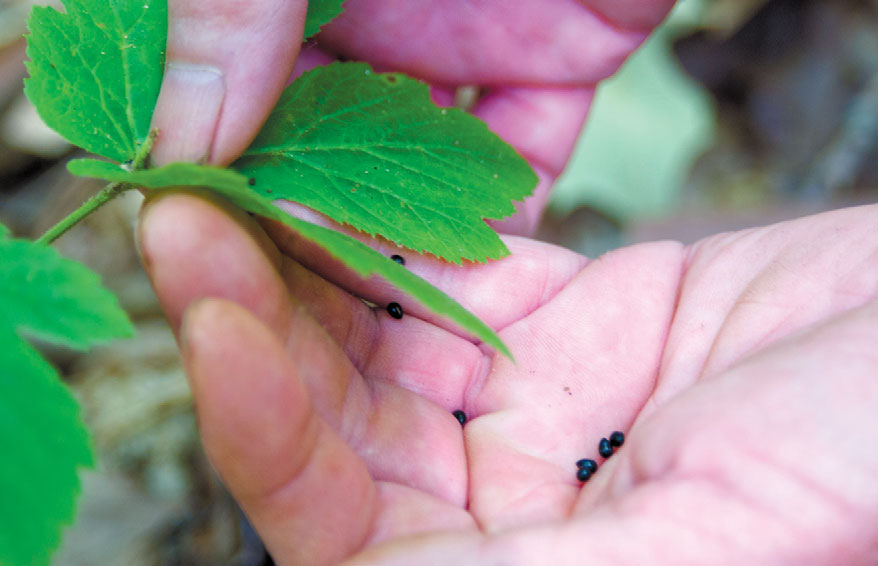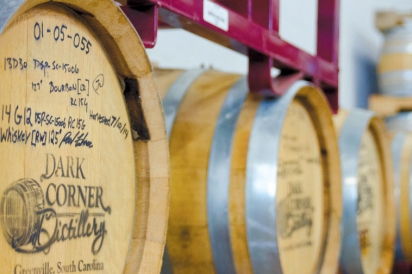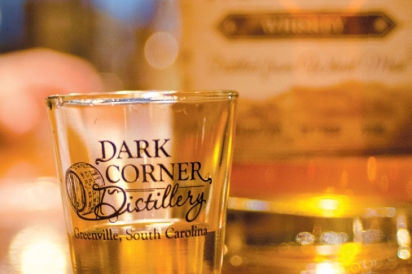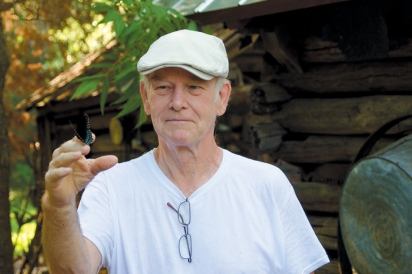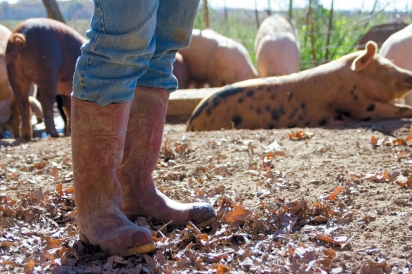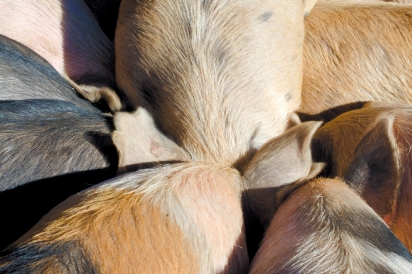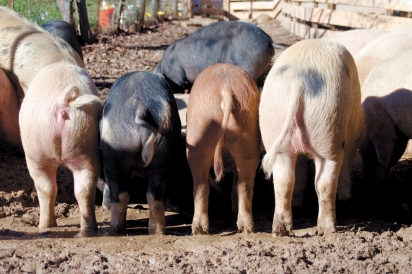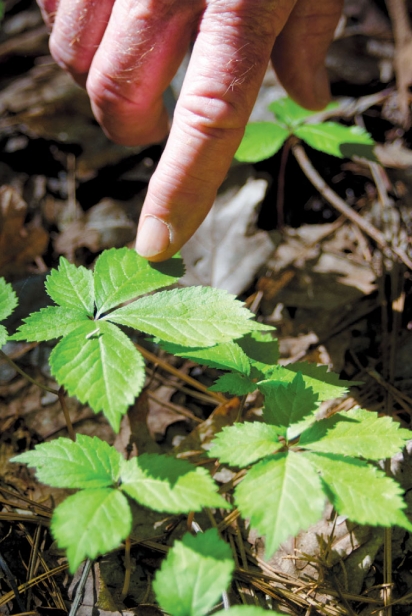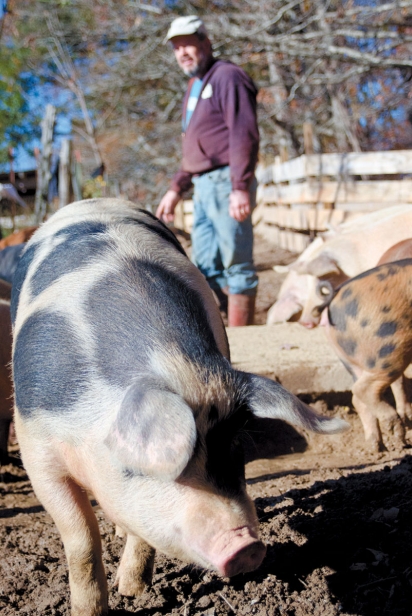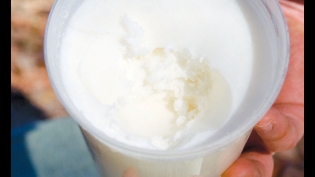Appalachian Dark Arts
Reviving the Past, Protecting the Future
The hills and hollers of the Appalachian Mountains have sparked imaginations for centuries—from the stouthearted Scots-Irish immigrants who settled here in the 1700s to the distant city dwellers titillated by tales of feuding mountain folk in the late 1800s and early 1900s. Sensationalized accounts of bootleggers and backwoods shootouts led to a public perception of Appalachia as a downright uncivilized place, filled with uneducated and impoverished people who were as wild as the mountainous region they called home.
More recently, there’s been a rehabilitation of those old Appalachian stereotypes. The creation of the Appalachian Regional Commission in 1965 provided resources for economic growth and improved infrastructure— important work that continues to this day. Asheville, once considered an isolated backwater, is now one of the hottest destinations on the East Coast. The emergence of the New South food scene has birthed countless paeans to downhome staples like pork belly and shrimp and grits. What was once common and undesirable is being dusted off, polished up and brought into the light.
The Water of Life
Two containers sit on my desk. One is a pint Mason jar with faded writing on the lid—it’s impossible to tell if the Sharpie scrawl references the current contents of the jar or some long-lost canning project. The other is an elegant bottle with a fine paper label. Both contain moonshine.
The Mason jar hearkens back to the storied tradition of ‘shine in Appalachia and calls to mind the image of a ramshackle still in the deep woods, operating under cover of night so as not to attract attention from the authorities. The home distillation of alcohol remains illegal in the United States, and I don’t know the name or location of the moonshiner who produced this particular spirit. The jar came into my possession like a whispered phrase in a game of telephone—passed along from person to person until its origin was neatly obscured. It takes me a little while to work up the courage to take a swig, but when I do I find it isn’t half bad.
I sample the contents of the bottle with much more confidence. Its provenance is as clear as the liquid it holds: This moonshine came from Dark Corner Distillery in Downtown Greenville, where the first legal moonshine in South Carolina hit the shelves in 2011. Five years later, the operation has expanded from a solitary copper still in the middle of the storefront to a 15,000 square foot production facility nearby.
Joe Fenten, the founder of the distillery, is a busy man with seemingly boundless energy and a knack for fusing tradition with technology. A native son of the Dark Corner in northern Greenville County, Joe grew up hearing tales of the alchemical process by which farmers turned their corn into the “water of life.”
After earning his degree in engineering from Clemson University, Joe was on the road as a contractor for Diageo, a multinational spirits company, when he had the idea for his own distillery. One night in his hotel room, Joe wrote up a business plan for this new venture. A week later he came home and set about executing it; within a year the doors to Dark Corner Distillery were open. The accolades for their flagship spirit and best-selling product, The World’s Best Moonshine, started coming in shortly after that and have yet to stop.
Two types of local corn go into each batch of The World’s Best Moonshine, supplemented with barley and red wheat. Making the moonshine is a surprisingly fast process: from grinding and fermenting the grains to distilling the alcohol, the process takes only five to seven days. Moonshine doesn’t need to be aged in barrels, so it stays clear while cask aged spirits like whiskey and bourbon take on a rich amber hue.
Despite the rather sordid history that accompanies moonshine, the reception to Dark Corner Distillery and its products has been overwhelmingly positive. Joe attributes this to the company’s emphasis on education. His goal is to show the public that moonshine is “not just a novelty, not just something to laugh at when you get it as a gift. It can be a really remarkable spirit.”
This aim is readily apparent on my visit to the storefront in Greenville, where the strains of a rousing bluegrass tune mingle with the faint, sweet scent of moonshine in the air. The original copper still now lies quiet and cold but the educational effort remains in full force with informational placards adorning the circa 1925 concrete walls. For those who would like to try before they buy, the distillery offers a $4 tasting menu that includes six quarter-ounce samples of moonshine, whiskey and mixed drinks along with a keepsake shot glass.
I belly up to the bar as employee Drew Nicely pours me a sample of The World’s Best Moonshine and demystifies the various mixers and syrups available for purchase in addition to the spirits. The moonshine pairs best with Sallie’s Greatest flavored simple syrups, he tells me, while the mixers—with flavors like Apple Cobbler and Pineapple Upside Down Cake— are designed to pair with the distillery’s flavored whiskeys.
I know from my conversation with Joe just how hard he’s worked to both honor the rich heritage of the Dark Corner and imbue his moonshine with the same cachet as other high-end spirits. From where I stand, surrounded by casks of bourbon and alight with the warm glow of moonshine, it certainly looks like that hard work has paid off.
The Fat of the Land
It’s a glorious November day, graced by a cloudless blue sky and just a hint of chill in the morning air, as photographer Brian Kelley and I walk up a dirt lane in Gray Court. When we crest the rise we finally catch up with Steve Ellis, the owner of Bethel Trails Farm and architect of “Hog Heaven,” the rented parcel of land we now survey. It’s feeding time and the pigs crowd around as Steve serves up their breakfast. Impatient squeals fade to satisfied grunts when the pigs have eaten their fill. “You’re about ready to go!” Steve drawls as he gives one of the pigs an affectionate pat on the rump.
There was a time when most Appalachian families kept a pig or two and lard was the primary cooking fat. Popular opinion of lard suffered in the early 1900s under the twin blows of Upton Sinclair’s slaughterhouse exposé, The Jungle, and the introduction of Crisco, shortening made from hydrogenated cottonseed oil and aggressively marketed as a “pure food from a clean factory” that was “more digestible and appetizing than…lard.” Then came the post-war claims that saturated fats like lard led to heart disease at the same time that many farming families were moving to town and away from their rural roots. Some baby boomers can still recall their grandparents butchering pigs in the cold months and rendering lard in big cast-iron washtubs, but for subsequent generations lard is a disgraced relic of a bygone era.
That’s beginning to change, however. The popularity of farm-to-table cuisine has inspired more chefs to utilize the whole hog and not just the choicest cuts, while new scientific studies have shown that the consumption of high-quality saturated fats may actually protect against chronic diseases rather than contribute to them.
Several of the chefs who purchase whole pigs from Steve—Anthony Gray at Bacon Bros. Public House and Greg McPhee at Restaurant 17 here in the Upstate, as well as Jason Houser at Meathouse in Charleston— render pork fat in-house and use it in their dishes. “The best thing about rendering your own lard is that you know what is in it,” Chef Gray says. “Lots of commercial products need to be enhanced with preservatives or [artificial flavors]…By buying from local farms you are able to control what is going in your body by knowing what is going into your food’s body.”
While Brian snaps photos, Steve tells me about his operation: there are 75 pigs here on 23 acres, and 100 more back at the farm proper, mostly copper-coated Tamworths and glossy black Berkshires. He takes the pigs in for processing when they’re about a year old and they weigh between 275 and 300 pounds. Out of that size pig you can expect only about two to three pounds of leaf fat, he tells me, which is highly prized for making lard. Leaf fat surrounds the pig’s kidneys and yields a dry, crumbly lard, while lard rendered from the fatback is softer and greasier.
According to Sandi Smith, one of Steve’s regular customers at the Simpsonville Farmers Market, leaf lard is perfect for pie crusts and greasing casseroles but fatback lard is more suited for cooking eggs and roasting vegetables. And she would know—Sandi is not only a fixture at many of the local markets but also the head of Paleo Greenville, an organization dedicated to sharing information about sourcing and preparing local, whole and healthy foods.
“There’s an idea that ‘it tastes good so it must be bad for me’ and vice versa,” Sandi says. “But you don’t have to be afraid of [lard]…it’s more important to be eating close to nature than to be counting calories or grams of fat.”
The Little Man
The gates to the world of American ginseng— or ’sang, as the old-timers called it— have always been closely guarded. Keeping the location of the wild stands a secret was once the key to securing an Appalachian family’s income. Now, that secrecy may be the only way to save what is perhaps the most popular, most misunderstood and most threatened medicinal herb in America.
After European settlers became aware of American ginseng, or Panax quinquefolium, in 1716, generations of wildcrafters dug ginseng roots to take to the cities and sell to brokers, who in turn shipped the roots overseas. Demand was highest in China, where a similar species of the plant, Panax ginseng, had been used medicinally for over 5000 years. Wild ginseng taproots are often gnarled and twisted, with branching rootlets that resemble the arms and legs of a human figure—these were the most desirable because they were thought to be the most potent. Ginseng has been long regarded as a panacea; the botanical name Panax is a combination of two Latin roots that mean “a remedy for all things.” More recently, this reverence has been borne out by scientific studies that classify the plant as an adaptogen, or an herb that helps the body deal with the effects of stress. Ginseng also supports physical and mental function by mildly stimulating the central nervous system and increasing the flow of oxygen to the brain and muscles by regulating the heart. The old timers might not have known the medical jargon to describe ginseng’s effects, but they did know this: it eased the aches and pains of daily toil.
In the 1700s and early 1800s, it seemed that the supply of American ginseng would never run out; the forested slopes of Appalachia were blanketed with the herb and the United States exported a staggering 352,992 pounds of ginseng in 1821. By the end of the century, however, it was clear that over-harvesting and loss of habitat had taken its toll on wild populations and attention turned towards cultivating ginseng in fields under artificial shade. But little effort was spared for replenishing the wild stands or reintroducing ginseng in the areas where it had been harvested to extinction.
Today, a pound of wild ginseng can fetch several hundred dollars while a pound of cultivated roots nets only about $50, so wild populations are still under pressure. Ginseng poaching is a perennial problem, particularly in Western North Carolina where some relatively accessible stands remain on public lands and many private landowners are trying to cultivate their own wild-simulated ginseng patches.
So it’s not surprising that contemporary ginseng growers are protective of their efforts, even if they’re not commercial, or that I went through a bit of a vetting process before I was invited to come see the ginseng that grows in Newberry County.
When I arrive at the property—an old plantation turned nature conservancy— it’s around 8am on a blazing hot morning in June. My guides for the day are Jim, the property owner, and Roy, the farm manager. We quickly learn that we are all of the same tribe: the hopelessly plant-obsessed. What follows is one of the finest displays of Southern hospitality I’ve ever experienced, complete with a home-cooked lunch, hours of good conversation and an armful of potted plants and cuttings to take with me when I finally say my goodbyes around 3pm.
But first we plunge into the woods, where despite my long sleeves and pants I’m eaten alive by swarms of enormous mosquitoes. When I catch sight of the ginseng seedlings, their leaves a vibrant yellow-green against the forest duff, the discomfort fades away in an instant. Roy, a former Navy man, stoops down and touches these two- to three-year-old plants with a reverence that signals his passion for this work. “Maybe next year they’ll bloom,” he says, and it’s clear from his tone of voice what a reward that would be.
The patience required to grow ginseng is immense; seeds can take several seasons to germinate and roots need at least six or seven years of undisturbed growth to reach marketable size. Roy’s had good luck ordering bulk ginseng seed in the early fall and cold stratifying it over the winter for spring sowing. He explains that site selection is critical for success—ginseng needs moist soils, about 75 to 80% shade, and a northern or northeastern slope to moderate the summer heat and provide adequate drainage.
Roy and Jim show me several other ginseng patches nearby and their voices rise in excitement when they discover some plants downslope from the original 10’ by 10’ plot. Ginseng doesn’t spread vegetatively, only through seed, so these must be a result of some seed that washed in the rain. Jim views it as confirmation of his belief that the wild ginseng populations can be revived with a minimum of human help. “This is feasible, this is possible, and folks should be doing this in the Upcountry,” he pronounces.
On the surface, Roy and Jim’s story of ginseng is just as much of a success as that of Dark Corner Distillery or Bethel Trails Farm. But it also serves as a warning: increased demand can give rise to commodification and this can be a destructive urge, leading us to risk our heritage for the sake of sating our appetites. It’s safe to say that there is still plenty of grain to make our moonshine, and plenty of pigs for our lard. But the same cannot be said of ginseng; with every season more wild stands fall to poachers, leaving our lands less diverse and the future of the plant itself in question.
So while some of these Appalachian dark arts now thrive in the light of day, others may be best left to the secret sanctuaries of the deep woods.
Dark Corner Distillery
241-B North Main Street
Greenville
864-631-1144
joe@darkcornerdistillery.com
www.darkcornerdistillery.com
Bethel Trails Farm
2302 Friendship Church Road
Gray Court
864-915-6064
www.betheltrailsfarm.com
betheltrailsfarm@gmail.com
Bacon Brothers Public House
3620 Pelham Road
Greenville
864-297-6000
anthonyg@baconbrothersfoodgroup.com
www.baconbrospublichouse.com
Paleo Greenville
sandi@paleogreenville.com
www.paleogreenville.com


